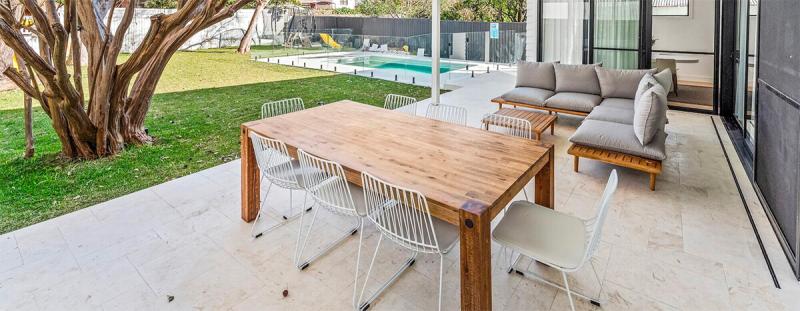From Quarry to Home: The journey of Granite Floor Tiles in Sydney

Granite has been the top pick and a personal favourite with
almost all the Sydneysiders for a long time when it comes to outdoor flooring.
The versatility of this stone makes it special, majorly used on high traffic
areas, it is equally beloved being used on low traffic areas too like a patio. But
have you ever wondered how does this amazing stone comes in the market for you
to purchase? From where all this natural stone comes from and what makes it the
most valued stone in the market and the top pick among all other paving
options.
Quarrying Granite Stone
Well, it starts with mother earth itself. Do you know
Granite is a volcanic stone and since there are volcanoes in Australia, you
would see a lot of monumental places in Australia even before the global trade
started done with Granite. The composition of Granite is quartz, feldspar and
mica and is formed from molten magma.
The process of extracting Granite out involves cutting large
blocks of the stone with a diamond wire saw cutters from the mountain sides
making sure it doesn’t impact the surrounding environment.
These heavy blocks weighing tons are carefully lifted and
prepared for their stage of the journey.
Transporting to the factory
Remember these heavy blocks weighs a ton and transporting
them from the quarry to the factory is a logistical challenge. Heavy duty
trucks are used to carry the blocks to the factory site.
Processing at the factory
Once these blocks reaches the factory, that’s where the
magic starts, these factories are equipped with start of the art machinery and
expert artisans are involved in cutting and shaping the stone to the desired
sizes.
Granite blocks are cut into slabs which later cut into
Granite tiles. Not only tiles can be made from the slabs but other formats like
pavers, treads and risers are also made from these slabs.
Cutting blocks into slabs is done through the process called
wet saw cutting where diamond blades are used and water to keep the dust low
and have a smoother cut every time. This process not only brings out the
granite's unique colors and patterns but also provides a smooth surface, making
it suitable for residential and commercial use.
Packing in a pallet
Once the Granite tiles and pavers are cut, they are packed
in a wooden pallet which has a standard size of 1mx1mx1m. The tiles and
pavers are put in the pallet vertically so that they do not break easily due to
bumps while transporting them to different locations. In case if they were
placed horizontally, there is always a chance of ripple effect, if one tile
breaks, the others too can break easily.
Once the tiles are put in a pallet, the pallet is wrapped
with a plastic film, this process is known as palletisation, which protects the
stone from dirt and debris.
Distribution
If the Granite is sourced locally from Australia, these
pallets need to be transported via trucks to different stores and warehouses of
retailers or wholesalers and distribution companies.
In case the Granite is coming from China or India, these
pallets are loaded in a shipping container, put on a ship, the ship arrives at
the nearest port of the distributor and sent to the warehouse via trucks.
Displaying at store
Once the Granite tiles reaches the store of a retailer or a
wholesaler, the tiles are put up on a display and customers can now view the
sample on the display in Sydney and get sample of the stone home too to match
it to their project space and getting approval from their builder or architects.
You can connect with different Granite Floor Tiles Supplier in Sydney to buy A grade Granite tiles.
Summary
Granite is a popular choice for flooring among Sydneysiders,
prized for its versatility and durability in both high and low traffic areas.
The journey of granite tiles begins with quarrying, where volcanic stone is
extracted from the earth. This process involves cutting large granite blocks
with diamond wire saws while minimising environmental impact.
Transporting these heavy blocks to processing factories
presents logistical challenges, typically managed by heavy-duty lorries. At the
factory, advanced machinery and skilled artisans cut the granite blocks into
slabs and then into tiles using wet saw cutting, which helps maintain the
stone's natural colours and provides a smooth finish.
Once processed, granite tiles are packed vertically into
wooden pallets to prevent damage during transport. These pallets are wrapped in
plastic film for protection. Distribution varies based on sourcing; locally
sourced granite is trucked to retailers, while imported granite is shipped and
then transported to warehouses.
Finally, granite tiles are displayed in stores, allowing
customers in Sydney to view samples and select the perfect option for their
projects, ensuring a seamless journey from quarry to home.


Comments